The Darina Allen Column
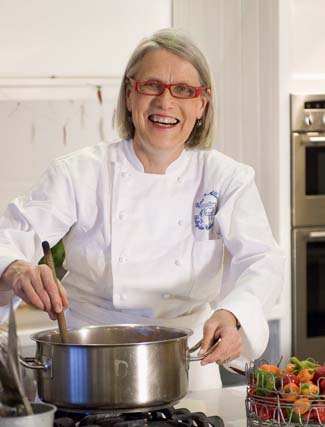
Christmas Recipes and Tips - and Good News about Real Butter!
The shops are brimming with tempting trinkets and baubles and canny shoppers are taking advantage of pre-Christmas bargains, and ticking off their lists. How good it feels to be organised, but more and more it’s a challenge for so many who are trying to balance both time and budget.
With less than a few days to go, if you have not already ordered your turkey or goose, do it right away. Organic free range turkeys are still in short supply ever since the annual sales of New York dressed turkeys were stopped in 1999.
I like to find an old fashioned bronze turkey but well reared white turkeys can also be good if hung for long enough. I hang them for three weeks plus, but that may not be to everyone’s taste. I personally find it greatly enhances the flavour.
A good ham is almost as much of challenge to find nowadays, as the paranoia around fat has forced producers to produce leaner and leaner ham which no longer has the sweetness or succulence of a fine fat ham.
My favourite Christmas cakes include a light and a rich version, also Dundee cake. Although they benefit from being made ahead then wrapped and stored, cakes can also be made closer to Christmas Day.
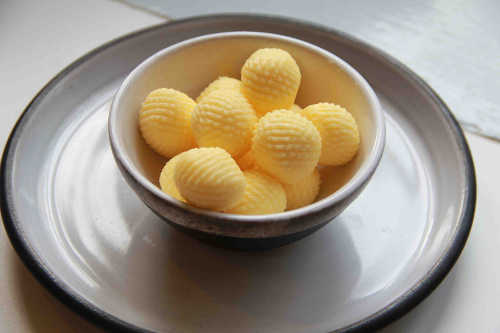 Now for the good news about butter which, of course, is a star ingredient in the Christmas baking (see recipes below).
Now for the good news about butter which, of course, is a star ingredient in the Christmas baking (see recipes below).
Surprise, surprise butter is better for you than margarine or all those spreads. How brilliant is that – 40 years on, we discover that butter, a totally natural product made from cream, is better for us than margarine containing up to ten ingredients.
It’s even more bizarre than that, we’ve now discovered at long last that fat is good for us and that the low fat diets were in many cases detrimental to our health. In a widely reported piece in the British Medical Journal, eminent cardiologist at Croyden University Hospital, Dr Aseem Malhotra argued that it was time to bust the myth of the role of saturated fat in heart disease.
From his analysis of the independent evidence he has concluded that there is no argument to back up the theory that saturated fats from non-processed foods are detrimental to our health. He maintains that saturated fats have been ‘demonised’ ever since a landmark study in the 1970’s concluded that there was a correlation between the incidence of coronary heart disease and total cholesterol.
An entire food industry has evolved and profited from this low fat mantra for almost four decades and the reality is low fat foods are often loaded with sugar and added salt, so according to Dr Malhotra it’s time for a paradigm shift, “We are now learning that added sugar in food is driving the obesity epidemic plus the rise in diabetes and cardiovascular disease”
The relentless message that saturated fat must be avoided to reduce the risk of coronary heart disease has dominated public heath campaigns and dietary advice for almost 40 years. This recommendation clearly has not produced the desired result.
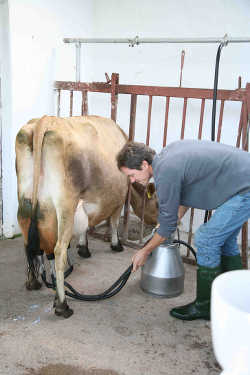 Dr Malhotra highlighted the fact that the amount of fat consumption in the US has decreased from 40 to 30% in the past 30 years yet obesity rates have rocketed. Questionable dietary advice has also led to the over medication of millions who have been prescribed statins to control their blood pressure and cholesterol levels. When, he argues, “adopting a Mediterranean diet after a heart attack is almost three times as effective in reducing mortality as taking a statin. Doctors need to embrace prevention as well as treatment”.
Dr Malhotra highlighted the fact that the amount of fat consumption in the US has decreased from 40 to 30% in the past 30 years yet obesity rates have rocketed. Questionable dietary advice has also led to the over medication of millions who have been prescribed statins to control their blood pressure and cholesterol levels. When, he argues, “adopting a Mediterranean diet after a heart attack is almost three times as effective in reducing mortality as taking a statin. Doctors need to embrace prevention as well as treatment”.
Dr Malhotra argues that sugar rich foods are more likely to result in a heart attack via Metabolic syndrome – a cluster of symptoms including high blood pressure, diabetes and obesity (the plague of the 21st century.) Butter, full fat milk, cheese and even eggs (for a period) were demonised while oil based spreads and low fat products flew off the shelves.
Many schools changed over to serving low fat products to their students and even questions on the Leaving Certificate paper suggested that margarine was more beneficial to your health than butter, a fact that incensed my niece in a recent exam.
Despite the paranoia around cholesterol levels a recent University of California, Los Angeles (UCLA) study indicated that 75% of acute heart patients do not have ‘high cholesterol’ Sounds like it’s time to rethink the received wisdom and “bust the myth of the role of saturated fat in heart disease” This won’t be easy considering the huge vested interests in the low fat industry – wait for the backlash.
Professor Robert Lustig, Paediatric Endocrinologist at the University of San Francisco, commented “Food should confer wellness not illness and real food does just that, including saturated fat, but when saturated fat got mixed up with the high sugar added to processed food in the second half of the 20th century, it got a bad name. Which is worse the saturated fat or sugar?
The American Heart Foundation has joined in the debate. “Sugar many times over, plus added sugar causes all the diseases associated with metabolic syndrome instead of lowering serum cholesterol with statins, which is dubious at best, how about serving up real food?” They have a point.
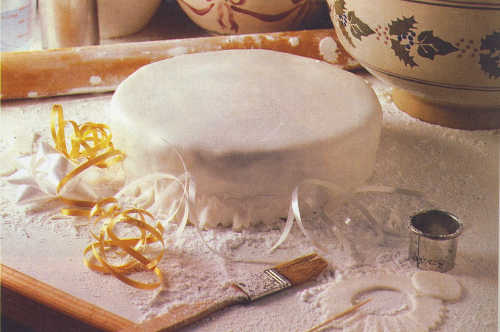 RECIPES:
RECIPES:
Darina Allen’s Iced Christmas Cake
This makes a moist cake which keeps very well. It can either be made months ahead or, if you are frenetically busy, then it will still be delish even if made just a few days before Christmas — believe me I know!
Serves about 40
110g (4oz) real glacé cherries
50g (2oz) whole almonds
350g (12oz) best-quality sultanas
350g (12oz) best-quality currants
350g (12oz) best-quality raisins
110g (4oz) homemade candied peel
50g (2oz) ground almonds
Zest of 1 organic unwaxed lemon
Zest of 1 organic unwaxed orange
60ml (21/2 fl oz) Irish whiskey
225g (8oz) butter
225g (8oz) pale, soft-brown sugar or golden caster sugar
6 organic eggs
275g (10oz) flour
1 tsp mixed spice
1 large or 2 small Bramley seedling apples, grated
Line the base and sides of a 23cm (9 inch) round, or 20cm (8 inch) square tin with a double thickness of silicone paper. Then tie a double layer of brown paper around the outside of the tin. Have a sheet of brown or silicone paper to lay on top of the tin during cooking.
Wash the cherries and dry them gently. Cut in two or four as desired. Blanch the almonds in boiling water for 1–2 minutes, then rub off the skins and chop them finely. Mix the dried fruit, nuts, ground almonds and grated orange and lemon zest. Add about half of the whiskey and leave for 1 hour to macerate.
Preheat the oven to 160C/ 325F/gas mark 3.
Cream the butter until very soft. Add the sugar and beat until light and fluffy. Whisk the eggs and add in bit by bit, beating well between each addition so that the mixture doesn’t curdle. Mix the mixed spice with the flour and stir gently into the butter mixture. Add the grated cooking apple to the plumped up fruit and stir into the butter mixture gently but thoroughly (don’t beat the mixture again or you will toughen the cake).
Put the mixture into the prepared cake tin. Make a slight hollow in the centre, dip your hand in water and pat it over the surface of the cake — this will ensure that the top is smooth when cooked.
Now lay a double sheet of brown paper on top of the cake to protect the surface from the direct heat. Bake for 1 hour. Then reduce the heat to 150°C/300°F/gas mark 2 and bake for a further 21/2 hours, until cooked; test in the centre with a skewer — it should come out completely clean. Pour the remainder of the whiskey over the cake and leave it to cool in the tin.
Next day, remove the cake from the tin. Do not remove the lining paper but wrap the cake in some extra greaseproof paper and tin foil until required.
Store in a cool, dry place; the longer the cake is stored the more mature it will be.
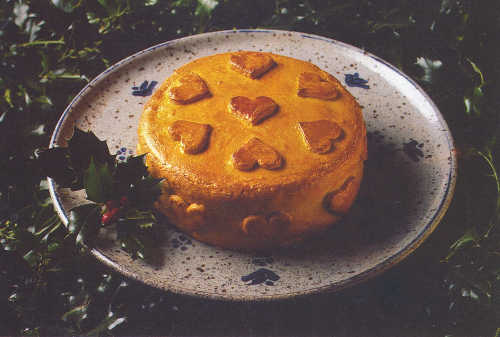 Almond Paste and Cake Icing
Almond Paste and Cake Icing
I ice the Christmas cake with almond icing and decorate it with heart shapes made from the almond paste. Then I brush it with whisked egg yolk and pop it in the oven — simply delicious!
Serves about 40
For the cake mixture:
450g (1lb) golden caster sugar
450g (1lb) ground almonds
2 small organic eggs
2 tbsp Irish whiskey
A drop of pure almond extract
For Brushing on the Cake:
1 organic egg white, lightly whisked, or sieved apricot jam
For the Fondant Icing:
1 packet fondant (450g/1lb)
Sieve the caster sugar and mix with the ground almonds. Whisk the eggs, add the whiskey and 1 drop of almond extract, then add to the other ingredients and mix to a stiff paste. (You may not need all of the egg.)
Sprinkle the worktop with icing sugar, turn out the almond paste and work lightly until smooth.
Remove the paper from the cake. To make life easier for yourself, put a sheet of greaseproof paper onto the worktop and dust with some icing sugar. Take about half the almond paste and roll it out on the paper: it should be a little less than 1cm (1/2 inch) thick.
Paint the top of the cake with the egg white or apricot jam and put the cake, sticky-side down, onto the almond paste. Give the cake a thump to ensure it sticks and then cut around the edge.
If the cake is a little round-shouldered, cut the almond paste a little larger; pull away the extra bits and keep for later to make hearts or holly leaves. Use a palette knife to press the extra almond paste in against the top of the cake and fill any gaps.
Then slide a knife underneath the cake or, better still, underneath the paper and turn the cake the right way up. Peel off the greaseproof paper.
Then roll out 2 long strips of almond paste: trim an edge to the height of the cake with a palette knife. Paint both the cake and the almond paste lightly with egg white or apricot jam.
Then press the strip against the sides of the cake: do not overlap or there will be a bulge with the uneven edge upwards. Trim the excess almond paste with a long-bladed knife and keep for decoration and to make almond biscuits.
Use a straight-sided water glass to even the edges and smooth the join. Then rub the cake well with your hand to ensure a nice flat surface.
Leave in a cool, dry place for a few days to allow the almond paste to dry out; otherwise the oil in the almonds will seep through the fondant icing.
To fondant ice:
Sprinkle a little icing sugar onto the worktop.
Roll out the sheet of fondant to a thickness of a scant 5mm (1/4 inch).
Paint the cake with egg white or apricot jam, then gently lift the sheet of icing and lay it over the top of the cake so it drapes evenly over the sides.
Press out any air bubbles with your hands, and then trim the base. Decorate as you wish. We use a little posy of winter leaves and berries, including crab apples, elderberries, rosemary, old man’s beard and viburnum.
That’s just one option. You could also add simple shapes stamped out of the remaining fondant icing — stars, holly leaves, Santas — to produce an impressive result. Or you could use gold ribbon wrapped around the cake, tied in an ornate bow on the top.
Ballymaloe Fudge
Makes 96 squares approx.
½ lb (225g) butter
2 lbs (900g) castor sugar
1 can evaporated milk
7 fl ozs (200ml) water
¼ tsp pure vanilla extract
Swiss roll tin 9 x 13 inch (23 x 33cm)
Melt the butter in a heavy bottomed saucepan over a low heat. Add the milk, water, sugar and vanilla extract and stir with a whisk until the sugar is dissolved. Turn up the heat to simmer, stir constantly until it reaches the ‘soft ball’ stage — 113ºC/235ºF.
To test, put some of the fudge in a bowl of cold water.
When ready pull off the heat. Stir vigorously until it thickens and reaches the required consistency – thick and sandy. Sit the base of the saucepan into a sink of cold water to stop the cooking. Pour into a Swiss Roll tin and smooth the surface with a spatula.
Allow to cool and then cut into squares before it gets completely cold.
***
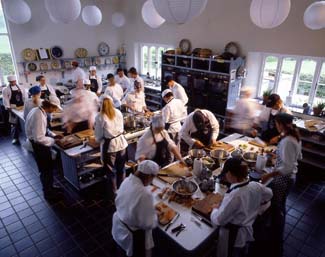 Once again, the Ballymaloe Cookery School in East Cork has a great programme of cookery courses for all interests and abilities running throughout 2014. Ranging from a relaxing visit to sit in on an afternoon cookery demonstration to a week long ‘Intensive Introductory Course’.
Once again, the Ballymaloe Cookery School in East Cork has a great programme of cookery courses for all interests and abilities running throughout 2014. Ranging from a relaxing visit to sit in on an afternoon cookery demonstration to a week long ‘Intensive Introductory Course’.
Sitting in the middle of a 100 acre organic farm the Ballymaloe Cookery School provides its students not only with a life skill learnt under the expert tutelage of their very capable teachers but also a place to relax and unwind from the stresses and strains of normal everyday life. The cottage accommodation available onsite for residential courses consists of a collection of delightful converted outbuildings which have been transformed over the years by the Allens, and other accommodation is available locally for the short courses.
www.cookingisfun.ie





There are currently no comments
Leave a comment
Not a member? Register for your free membership now!
Or leave a comment by logging in with: